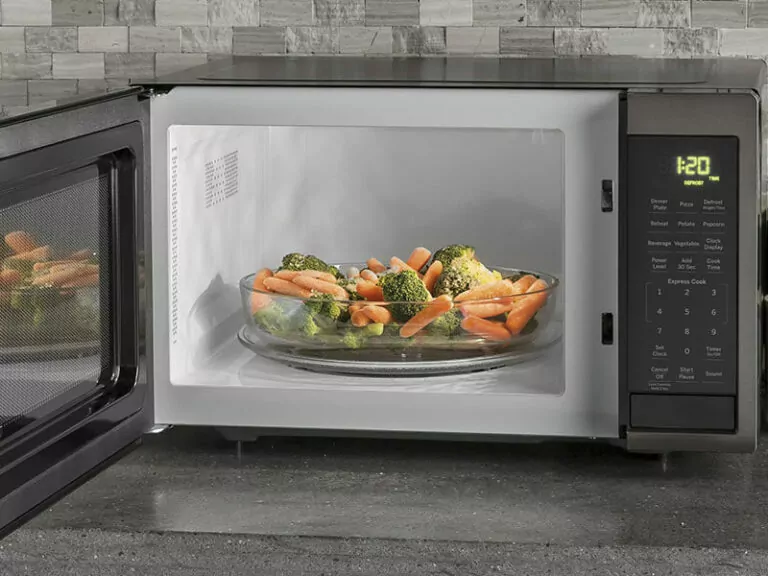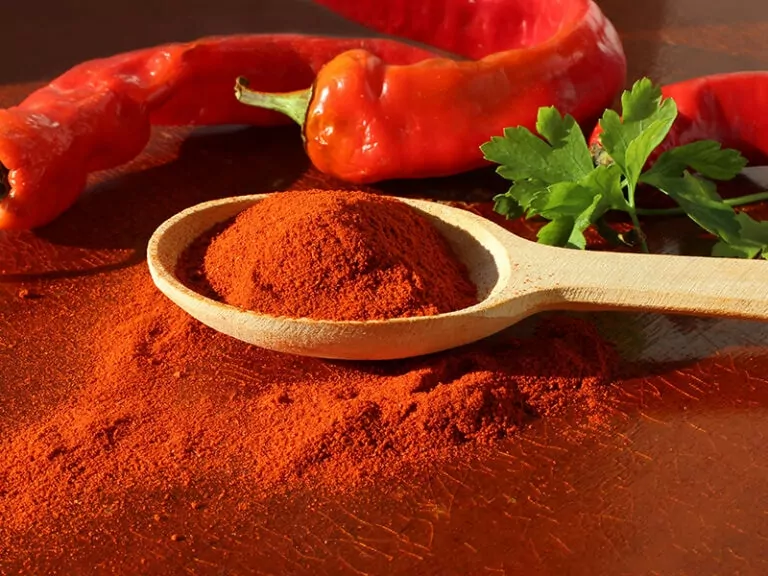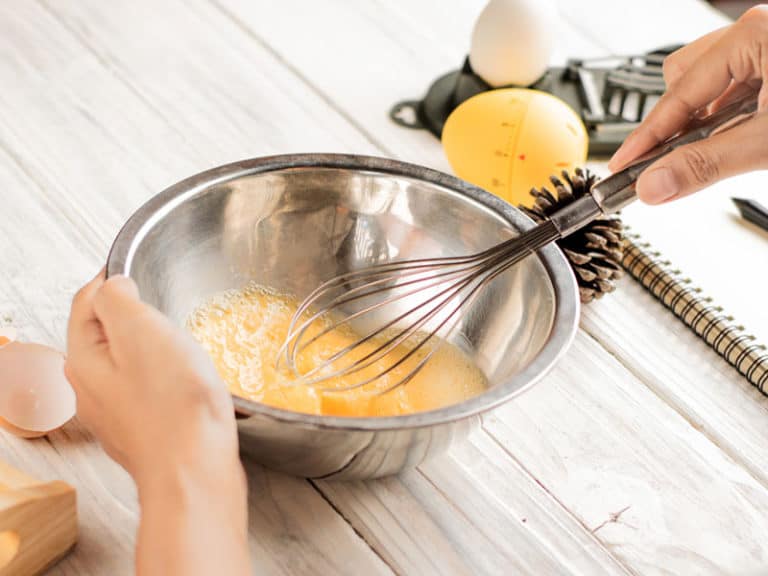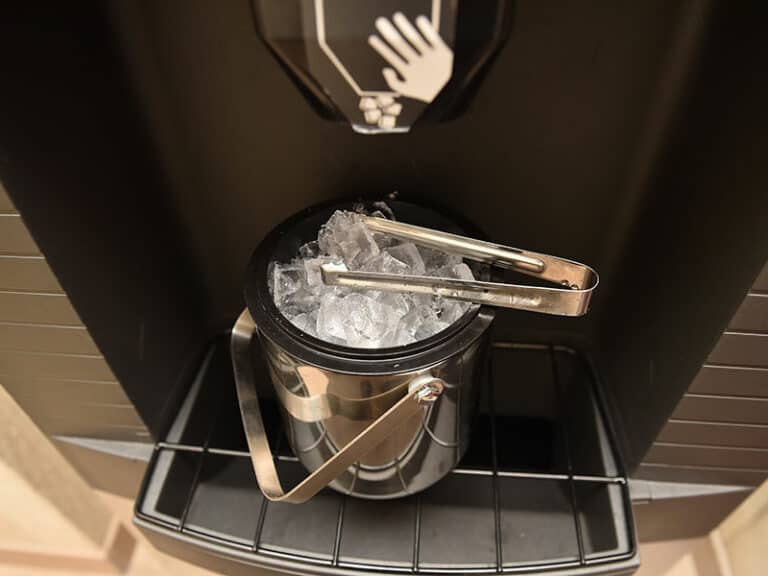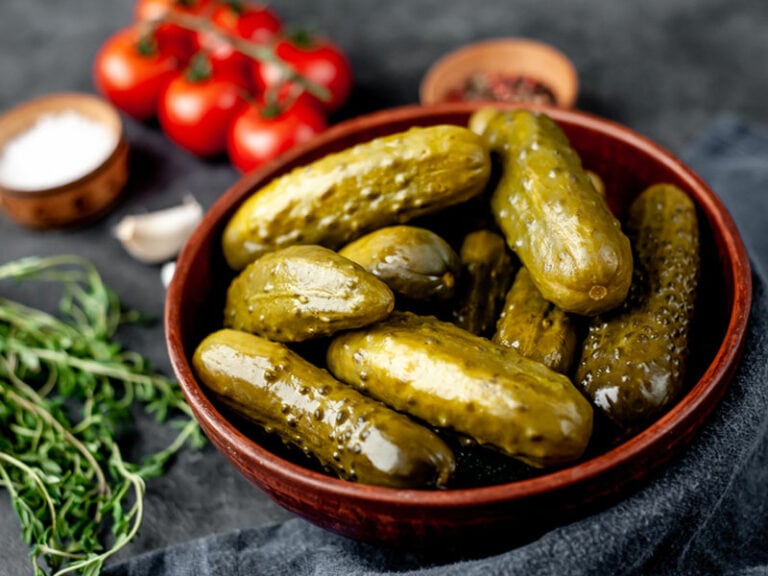A lot of amateur bakers are confronted with the uneasy problem of how to store yeast effectively. To begin with, most types of yeast don’t have a long shelf life. If contained improperly, yeast can go bad pretty quickly. But this post will help you prevent such a nightmarish scenario.
There are many ways that yeast can spoil, so knowing how to ward off all of them will allow you to use yeast more safely. From fresh yeast to instant yeast, this post will cover them all. Read on to find out more!

An Overview Of Yeast
Yeast comes in many types with different storage requirements. Therefore, getting some basic information about yeast will help you learn how to store it more easily.
What Is Yeast?
“It’s alive!”, that’s what. Yeast is a living thing belonging to the fungus kingdom. It is a microorganism that feeds mainly on sugar (1). Yeast is a vital ingredient to Western cuisine, present in a wide range of food. Dead yeast can even be directly consumed as some kind of supplemental food.
You can buy a bag of commercial yeast at a convenience store or make your own yeast. The type of yeast you use will dictate how you should store it. All forms of yeast have expiration dates which may come sooner if there is no proper storage.
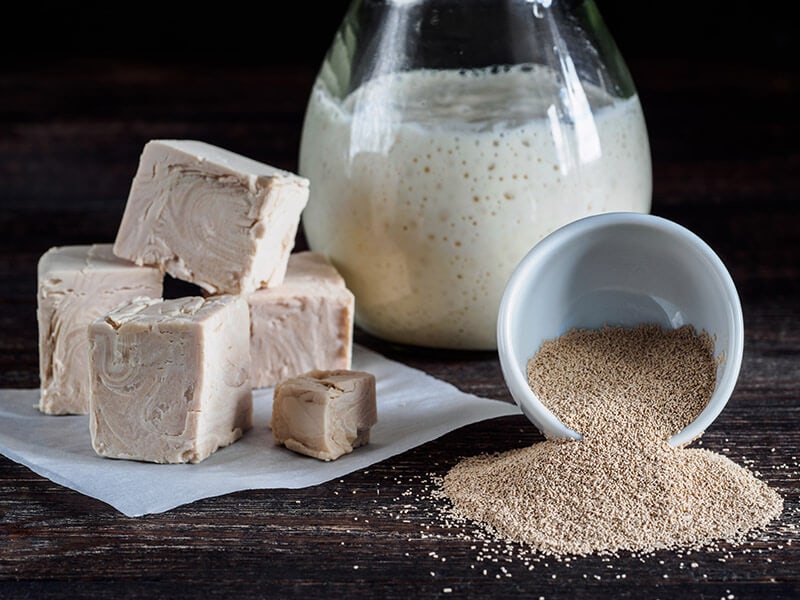
What Is Yeast Used For?
The main application of yeast is to act as a leavening agent in baking. Yeast is the transformative factor that changes tasteless dough into softer, lighter, and more delicious bread. Every DIY baker in the world must have some yeast in their cupboard or refrigerator.
Yeast is also used in making beer and wine. But since far more people make bread than brew beer at home, this post will only deal with yeast for baking, a.k.a baker’s yeast.
What Are The Substitutes For Yeast?
However, yeast isn’t the only thing that makes bread tick. There are a number of substances that can work in place of yeast.
- Baking powder: this is a very popular ingredient in baking. It causes the bread to rise almost immediately, saving a lot of time and effort. But bread prepared this way isn’t as tasty as it is with yeast.
- Baking soda and acid: another commonly-used leavening agent. Its effects are just as instant as those of baking powder and inferior to those of yeast.
- Sourdough starter: basically a hardened version of yeast. It is difficult to store and use but produces excellent bread.
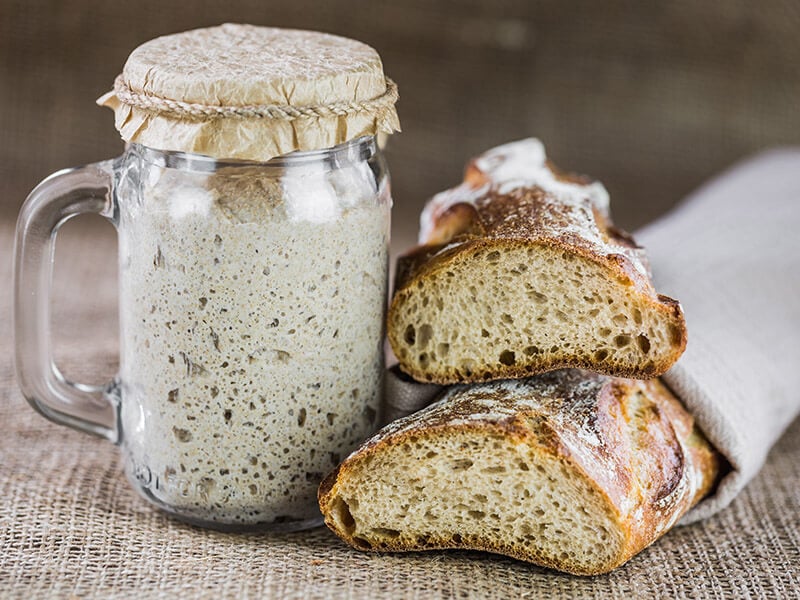
Can Yeast Be Bad For Health?
Once yeast expires, it becomes inactive or dead. Dead yeast usually changes color or odor. It won’t get your baked goods to rise. No one with common sense will eat those things, so you are safe from bad yeast.
However, a large number of people are allergic to yeast. If you suffer from this type of allergy, any food containing yeast or bacteria in general (bread, cheese, beer, yogurt, etc.) should be given a wide berth.
Raw yeast isn’t suitable for direct consumption. Eating it in a small amount is OK, but intake of a large quantity will cause you many problems. Among them are stomach distress, skin irritation, bloating and gas, etc.
Nutritional yeast is a different story. You can eat it directly as a vitamin and mineral supplement (2). Nevertheless, it has some potential side effects, so you should consult with your doctor before using it.
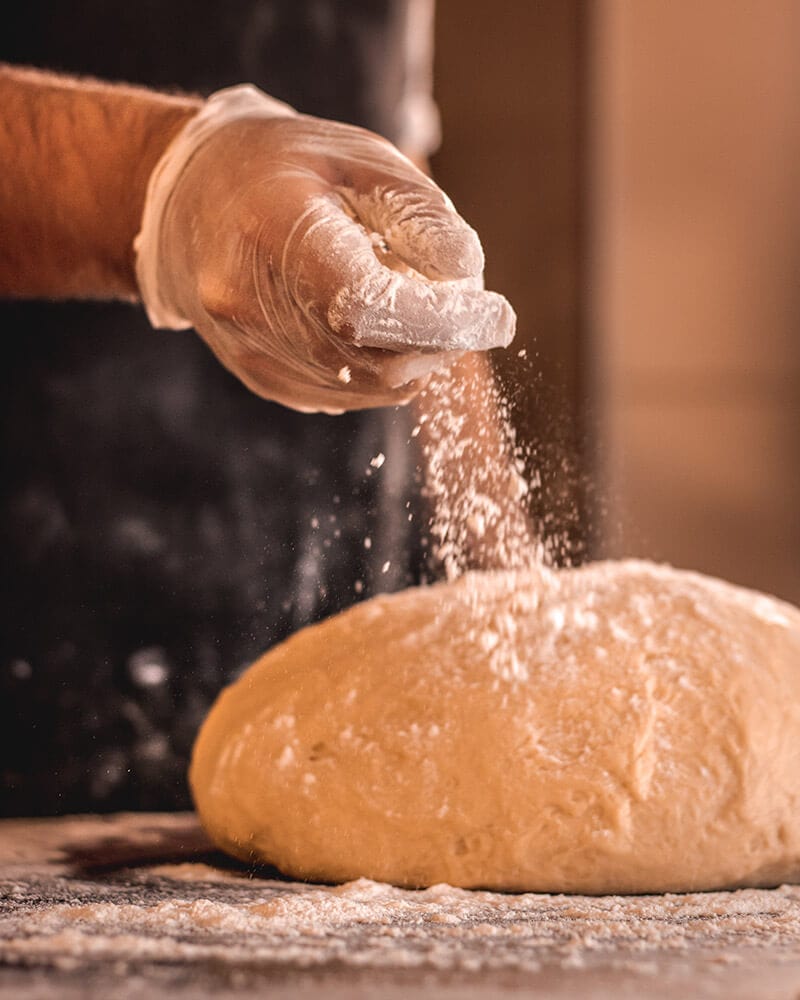
Types Of Yeast And Their Shelf Life
By and large, there are three wildly different types of baker’s yeast plus nutritional yeast for eating directly. You should make your choice of yeast carefully according to how long you want to store it.
1. Instant Yeast/ Rapid Rise Yeast
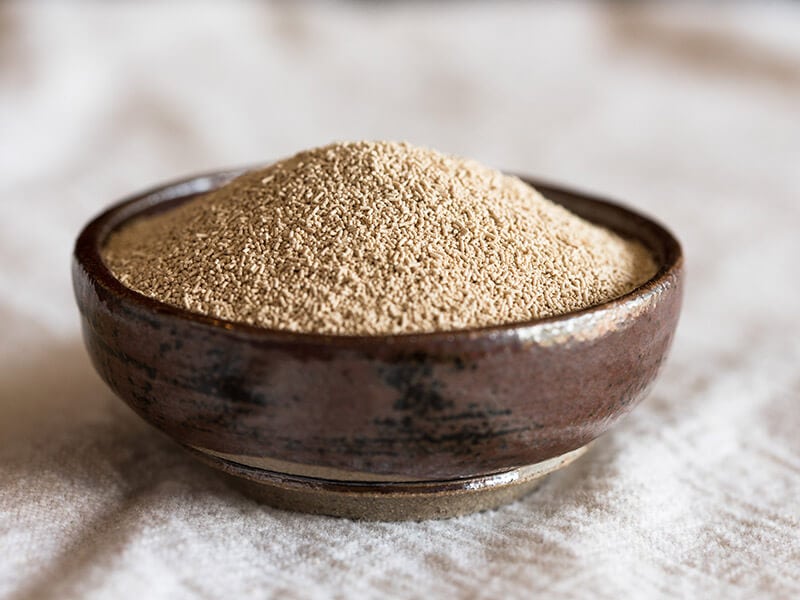
As suggested by the name, instant yeast (or rapid rise yeast) reacts immediately when coming into contact with the bread. It is usually commercially manufactured and packaged. Convenient stores usually sell instant yeast. You should have no trouble finding the expiration date on the packaging.
Typically a bag of instant yeast has a life shelf of 18 months to 24 months. Despite this, dry yeast has the best quality only for the first 12 or 18 months. Beyond that, it can turn dormant even though it isn’t past its expiration date yet.
However, after the package is opened, you should use it within no more than 4 months or 6 months.
2. Active Dry Yeast
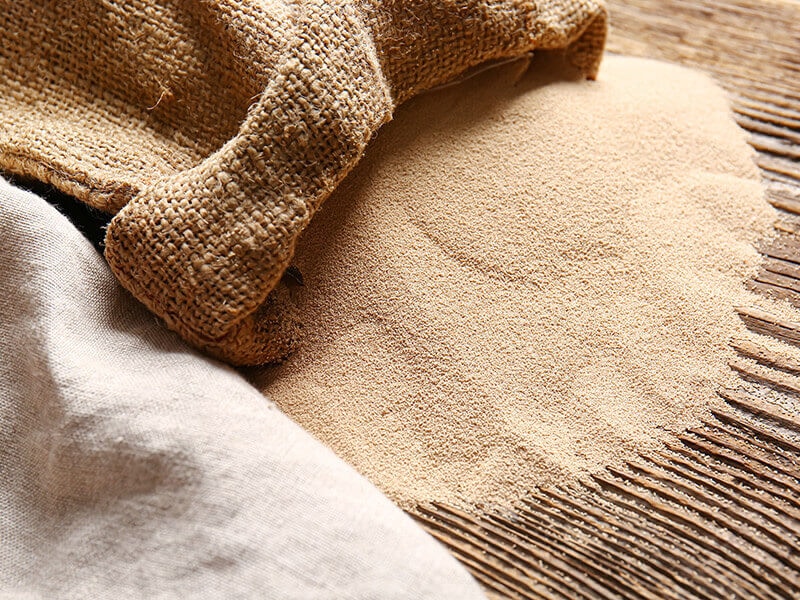
Active dry yeast is different from its instant counterpart in the sense that it takes longer to work and produces better bread. Moreover, while instant yeast is mostly mass produced, active dry yeast can be organic and homemade.
Homemade active dry yeast is usually alive for 4 months to 6 months, while the commercial counterpart can be shelf-stable for as long as instant yeast is.
Though you can theoretically keep active dry yeast for 24 months after the packaging date, you should use it before that time. An opened package of active dry yeast should be thrown away after 4 months or 6 months.
3. Fresh Yeast
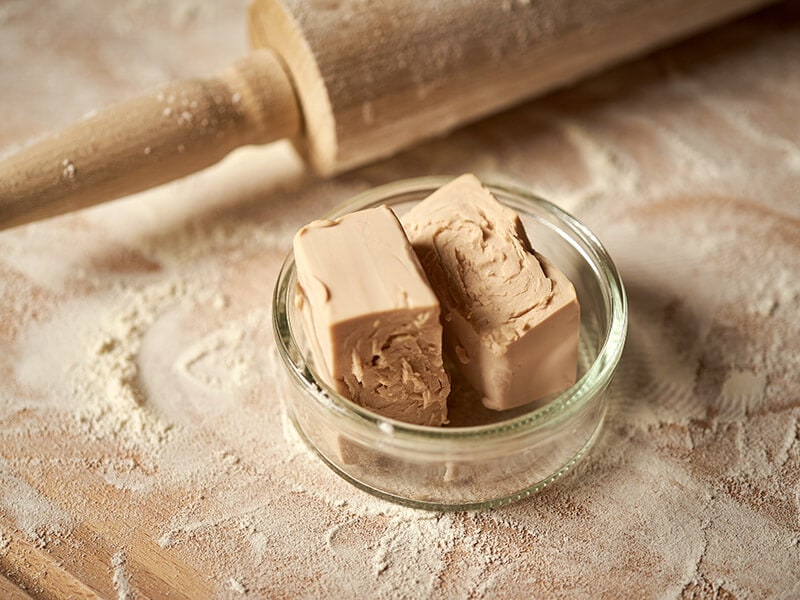
Fresh yeast has a much, much shorter shelf life than all types of dry yeast. Even with ideal storage conditions, the maximum time you can store it is 3 months.
4. Nutritional Yeast
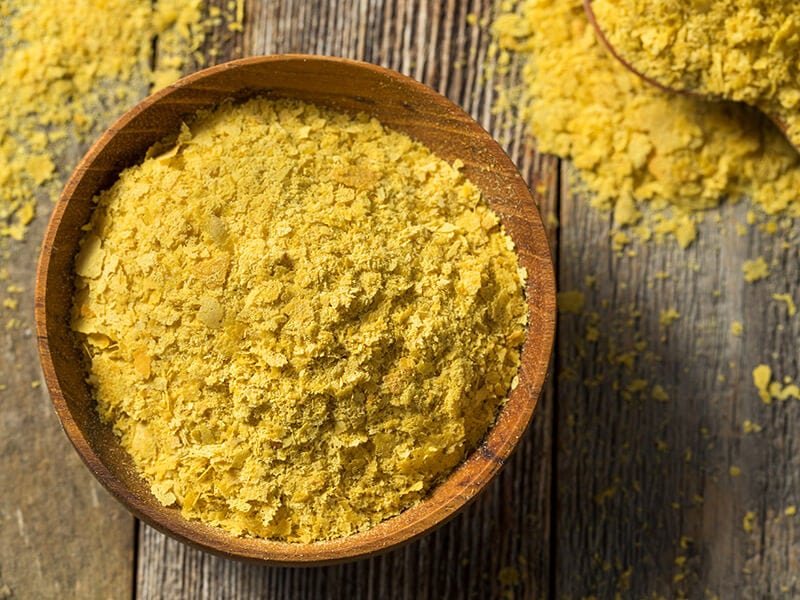
Nutritional yeast is wildly different from other kinds of yeast because it is already dead or deactivated. People sprinkle it over their food to add more vitamins and minerals to their diets. Nutritional yeast is usually shelf-stable for two years.
How To Check Yeast Freshness
I have presented the theoretical shelf life of yeast. In reality, however, many factors can make your yeast go bad or dead before the intended time. Therefore, it is important to check whether your yeast has expired. The process is called “proofing”.
When to proof yeast? Dry yeast can be considered possibly inactive as early as 6 months before its expiration date. For fresh yeast, there is no fixed time because it can vary considerably according to storage conditions. To sum up: proof dry yeast that has less than 6 months to go and proof fresh yeast whenever you feel like it.
You can use your yeast to make a batch of bread to check its freshness, but this is indeed very wasteful if the yeast happens to be dead. I will provide you with a simpler and faster method below.
Step 1: Put Together Some Warm Water
Prepare ¼ cup of warm water at 35°C – 45°C. The temperature must be within this range: yeast won’t react if it is lower and will die if it is higher.
Step 2: Use The Water To Test Your Yeast
Add 2 teaspoons of sugar to the water and stir gently. Then add 1 teaspoon of yeast to the sugar water and stir gently.
Step 3: Sit Back And Observe The Result
Leave the cup undisturbed, wait for 10 minutes, then observe the mixture. If it rises and foams and smells faintly like beer, the yeast is still alive. If it doesn’t, the yeast is dead and unusable.
Follow these simple steps to determine if your yeast is still active.
Simple Yet Effective Methods To Store Yeast
When you are certain about the potency of your yeast, it’s time to store the food properly. Unopened dry yeast isn’t picky and only requires basic storage.
But it is trickier with fresh yeast and opened dry yeast. You need a refrigerator for long-term storage.
To help you choose a suitable storage method, before going into the detailed instructions, I will present a summary table about different ways of storing yeast.
1. How To Store Unopened Dry Yeast
Simply put unopened packages of instant/ active dry yeast in places with low humidity and out of direct sunlight. Your pantry is good enough. There is no need to store unopened dry yeast in refrigerators.
Note: At or above 45°C, yeast starts to show signs of weakening. A temperature higher than 60°C will definitely kill yeast and render it inactive. Therefore, keeping your yeast out of direct sunlight is imperative.
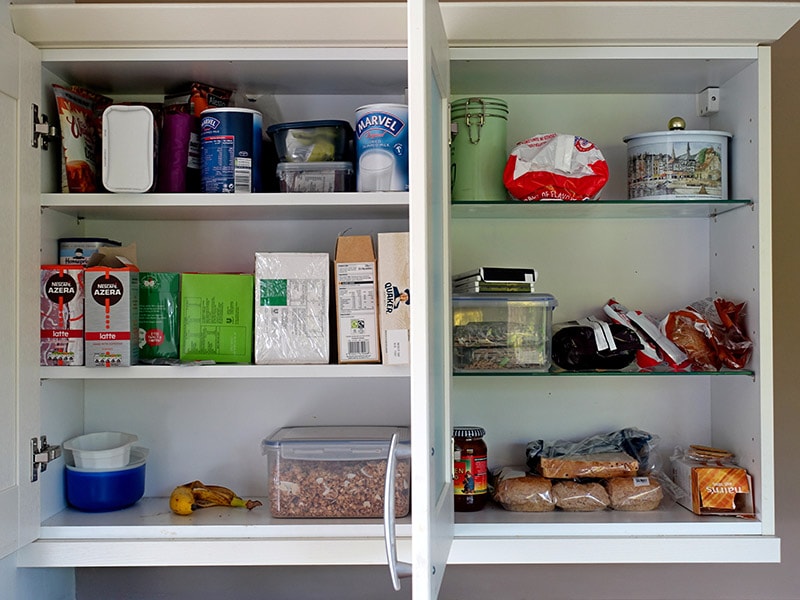
2. How To Store Opened Dry Yeast
Once dry yeast is exposed to air, it is prone to quick deterioration. Therefore you need to apply more meticulous forms of preservation. But there is no need to fret, all you have to do is to follow the easy steps I’m going to show you.
Depending on how long you want to store yeast, you need to choose between refrigerating and freezing, which makes your yeast last for 4 months and 6 months more, respectively.
Storing Dry Yeast In The Refrigerator (4 Months)
Choose this method if you want to store your yeast for less than 4 months.
Step 1: Prepare A Container For Dry Yeast
Put the yeast into an airtight container (such as a glass or plastic jar). If you use a plastic bag, after filling it with the yeast you must either press as much air out of it as possible or use a vacuum sealer. Then seal the bag tightly with tape or a rubber band.
Step 2: Stow The Container In The Refrigerator
Stick the container or bag with a label indicating the best-by date. Put it in the refrigerator until further use. In this way, dry yeast can be stored for 4 months.
Storing Dry Yeast In The Freezer (6 Months)
Follow those instructions if your dry yeast has to be stored for 6 months.
Step 1: Prepare A Container For Dry Yeast
Seal the yeast in an airtight container or bag as you do with refrigerated, dry yeast. You can wrap it up with some plastic layers for extra protection (optional).
Step 2: Stow The Container In The Freezer
Label the container or bag. Store it in the freezer. You can leave it there for up to 6 months.
Step 3: Thaw And Activate Yeast Before Using It
When you want to use your yeast, you need to thaw it in the cooler part of your refrigerator for 12 hours. Then activate the yeast by exposing it to room temperature for 30 minutes to 60 minutes before cooking.
Right here is an in-depth visual guide that tells both methods of how to store dry yeast after opening it.
3. How To Store Fresh Yeast
Fresh yeast is more difficult to store than the dry one. The main reason is its high water content. The secret to successful preservation is to prevent your yeast’s moisture from being affected by the environment.
Most people keep fresh yeast in their refrigerators. But like dry yeast, you can freeze it to extend its shelf life. For your convenience, I will demonstrate both ways.
Storing Fresh Yeast In The Refrigerator (1 Month)
This guide will help you preserve your fresh yeast for 1 month at most.
Step 1: Prepare A Container For Fresh Yeast
Wrap your yeast in some parchment paper, then put it into a sealed container. The papers will absorb excess moisture that could spoil the yeast.
If you store yeast in a bag, squeeze the bag until it is out of the air and seal it, or you can use a vacuum sealer to remove air faster.
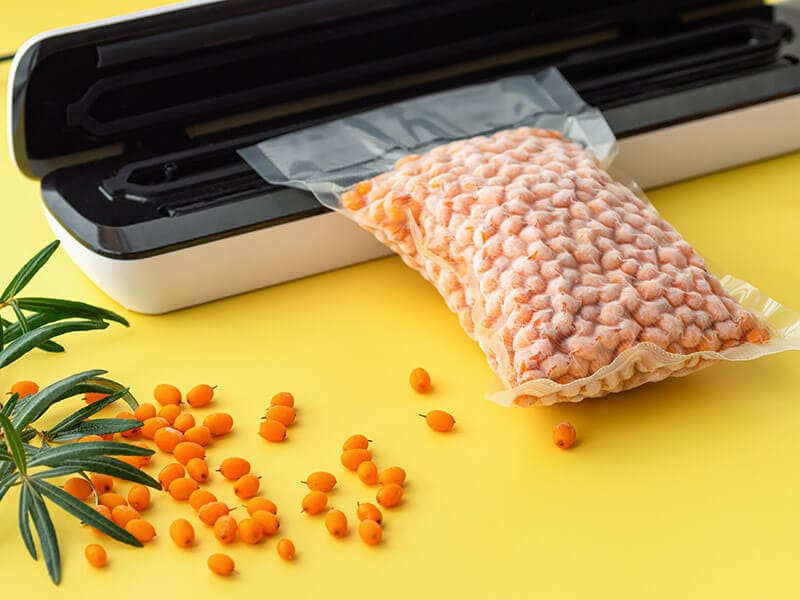
Step 2: Stow The Container In The Refrigerator
Stick a date label on the container. Store it in the refrigerator. The maximum storing time is 1 month.
Storing Fresh Yeast In The Freezer (3 Months)
Freezing will help you store your fresh yeast for up to 3 months.
Step 1: Prepare A Container For Fresh Yeast
Store your yeast in parchment papers and an airtight container. Add some extra layers of plastic wrap and finish it up with aluminum foils.
Step 2: Stow The Container In The Freezer
Stick a date label on the container. Store it in the freezer. Frozen fresh yeast can last for as long as 3 months.
Step 3: Thaw And Activate Yeast Before Using It
When you want to bake, first defrost the frozen yeast in the refrigerator for at least 12 hours before leaving it to sit at room temperature for 30 minutes to 60 minutes.
How to reserve fresh yeast with plastic boxes and parchment papers.
4. How To Store Nutritional Yeast
This kind of yeast is basically already dead, so there are no strict storage requirements. It is often sold in packages, making it even easier to store.
All you need to do is to shut the lid tight and keep your yeast in a cool, dark place with no direct sunlight. Your cupboard or refrigerator will do. You can store both unopened and opened nutritional yeast in the same way.
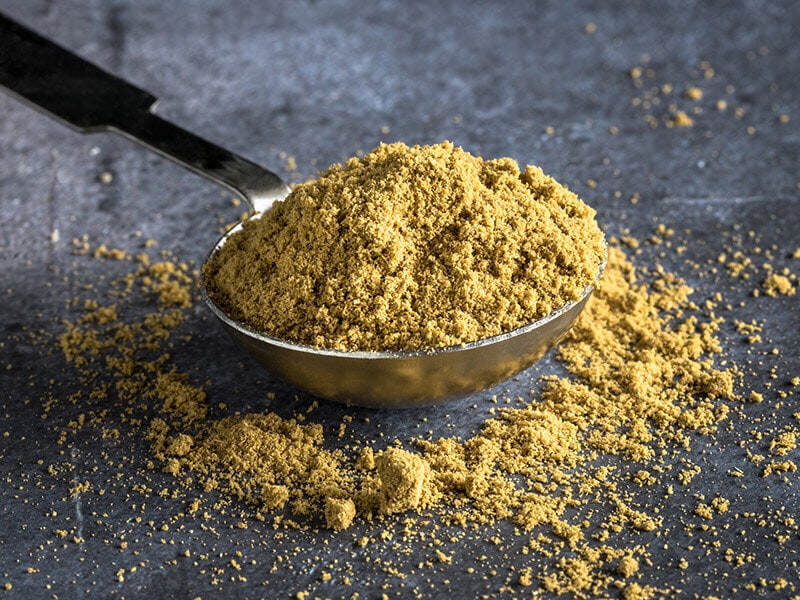
Bonus Tips: How To Make Your Own Yeast At Home
Supposing that you want to bake but your supply of yeast has run out and yet there is no more to buy, what should you do? Getting upset isn’t a choice. Let’s just make some more! With some basic ingredients and the recipe I’m going to show you, you’re going to culture your own yeast.
There are several recipes for making yeast, but I choose this one because it is the simplest. Please note that the result is water yeast which is different from other types discussed earlier.
Preparations
- 500 ml of clean, filtered water (bottled water is recommended, but tap water is OK as long as it doesn’t have too much chlorine)
- Some pieces of raisins or fresh, unwashed fruits (preferably apples)
- Sugar or honey
- A clean glass jar with a loose lid
Step 1: Prepare The Container
Sterilize the glass jar in hot water before leaving it to dry.
Step 2: Grow Your Yeast In The Container
Put the raisins or fruits into the glass jar along with a few tablespoons of sugar or honey. Fill the jar with water, stir gently to dissolve the sugar or honey. Place the lid on the jar but don’t fasten it tightly so that some air can get in and out.
Step 3: Watch The Container
Put the jar in a warm place out of direct sunlight for 3 to 8 days. Open the lid and stir the mixture at least once a day. When the water bubbles and smells faintly like wine, and the fruits float, your yeast is ready.
Step 4: Store And Use Your Homemade Yeast
Your yeast water has to be stored in the refrigerator. In ideal conditions, you can keep it for 2 months at most. When you bake, mix the dough directly with your yeast water instead of regular water.
A great step-by-step guide on how to make your own yeast at home.
Great Tricks For Keeping Yeast In Good Condition
A nice cupboard, a working refrigerator, plenty of jar glasses, etc. You have everything you need to keep yeast for a long, long time. But knowing a few more tricks about yeast storage will help you considerably. Here they come!
Don’t Hesitate To Use The Freezer To Store Fresh Yeast
Some people fear that fresh yeast will die when frozen. The good news is that it only happens if you don’t store your yeast properly. Follow the step-by-step guide that I have provided earlier, and everything will go smooth sailing.
If You Store Your Yeast In The Freezer, Divide It Into Many Containers
The idea is that when you want to bake, you can easily choose the right amount of yeast to thaw and activate. You only need to take a few containers rather than all of them. If you get more yeast than you need, the excess has to be discarded because it can’t be refrozen.
When In Doubt, Proof It
Dry yeast might lose its potency well before its expiration date, but in some cases, it can stay active for much longer. If you visit online cooking forums, you can come across crazy stories about yeast from baking enthusiasts.
Those stories often go that their dry yeast is so well stored that it is still alive after 5 or even 10 years. Therefore, don’t give up on your expired yeast yet, treat it as “innocent until proofed otherwise”.
If You Run Out Of Sugar, You Can Use Honey As A Substitute When Proofing
Also, make sure the water temperature is right. Water that is too hot or too cold is a common reason why yeast doesn’t react.
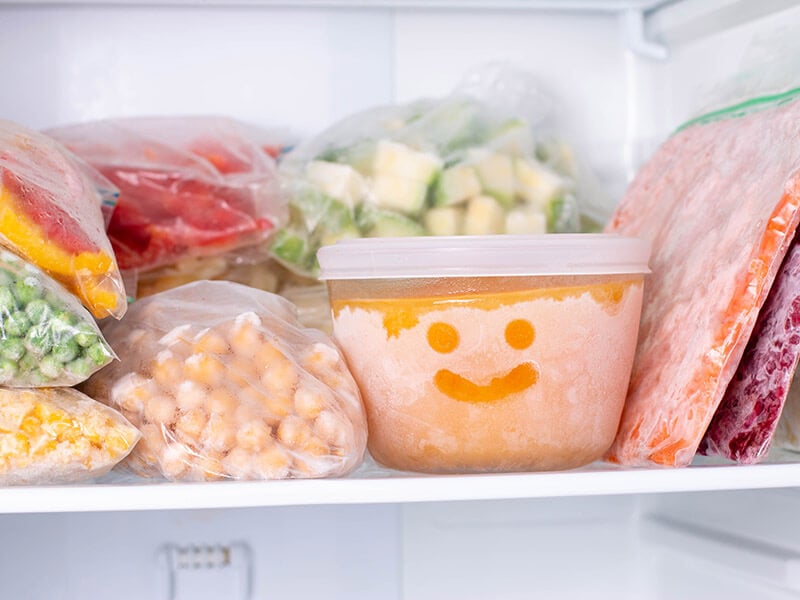
FAQs
Storing yeast isn’t a difficult job, but many things can go wrong along the way. Therefore, I have included the answers to some popular questions about yeast that you may have.
Storing Yeast Is A Piece Of Cake (Or Bread)
Now you are well-versed in how to store yeast. Basically, your refrigerator and care are your best weapons in the fight to keep the yeast alive.
With the instructions I’ve shown you, there is no longer any danger that your batch of bread or sourdough will fail because of some dead microorganism. It’s time to explore all possibilities of baking.
If you find this post helpful, please share it with your friends so that they can store yeast more safely and effectively. You can also tell me what you think by leaving a comment. Many thanks!
Reference
- En.wikipedia.org. 2021. Yeast – Wikipedia. [online] Available at: <https://en.wikipedia.org/wiki/Yeast> [Accessed 27 December 2021].
- Medicalnewstoday.com. 2021. Top 5 nutritional yeast benefits and how to use it. [online] Available at: <https://www.medicalnewstoday.com/articles/323245> [Accessed 27 December 2021].

